
Despite the improvements in weather forecasting over the past few decades, it can still be enormously beneficial to compare your own observations with predictions. Forecasting is pretty good at telling you what’s going to happen, but predicting the exact timing, or location of events can still be a challenge.
There are a couple of reasons for this – firstly forecasts often cover a huge geographical area, which means there’s little scope for detail. Secondly a weather feature may move a little faster or slower than predicted. Alternatively cloud cover might be slightly heavier than forecast, which prevents the sun from breaking through, or even creates a little light rain.
A further problem for forecasters is that it’s very difficult to pin down exactly what the wind strength will be – a small change in the location of weather systems may result in the gradient wind changing by up to two points on the Beaufort scale.
Our own observations are hard data, rather than predictions, that can help to fine-tune our understanding of the forecast and build a more accurate picture of the likely weather for our location.
For instance, if the sun doesn’t burn through a thin layer of cloud on a summer’s morning we know that we’re less likely to see thermal enhancement of the wind during the afternoon. Or if the wind is stronger than forecast in the morning, observing the sky and keeping tabs on changes in atmospheric pressure may be able to tell you whether a system is moving across sooner than predicted, or whether the low has become deeper and more intense than expected.
Observing frontal progress
Bu hikaye Practical Boat Owner dergisinin February 2021 sayısından alınmıştır.
Start your 7-day Magzter GOLD free trial to access thousands of curated premium stories, and 9,000+ magazines and newspapers.
Already a subscriber ? Giriş Yap
Bu hikaye Practical Boat Owner dergisinin February 2021 sayısından alınmıştır.
Start your 7-day Magzter GOLD free trial to access thousands of curated premium stories, and 9,000+ magazines and newspapers.
Already a subscriber? Giriş Yap

Orca sink yacht in Strait of Gibraltar
Spain's maritime rescue service, Salvamento Maritimo, has reported that a 15m (49ft) yacht sank in Moroccan waters in the Strait of Gibraltar following interaction with a pod of orca.

No kill cord or lifejackets were worn during fatal powerboat crash
A kill cord and lifejacket are useless unless worn-that's the warning from the Marine Accident Investigation Branch (MAIB), following its investigation into a powerboat crash that killed a 32-year-old woman and five-year-old girl on 2 October 2022.

Multihull sail work
Brush up on multihull sailing skills before heading off on charter with Gavin Le Sueur's guide to spinnaker handling, tacking and gybing

Five top causes of engine failure and how to prevent them
Jake Kavanagh talks to Sea Start marine engineer Nick Eales about how to avoid the five major causes of an engine breakdown at sea
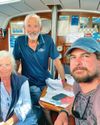
Sail the Atlantic with strangers
Would you sail across the Atlantic with someone you've just met? Ali Wood meets the cruising crews who've done just that

IZIBoat: simple sailing
Rupert Holmes sails an innovative catamaran design intended to widen participation in sailing among those with little time to get on the water in more conventional craft
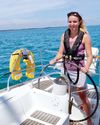
30 WAYS TO GET AFLOAT
From tall ships to small dinghies, you needn't own a boat to sail. Ali Wood looks at the options, and how skippers can also find crew
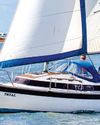
Boats for restoring under £20,000
Duncan Kent picks the best sub-35ft sail and power boats to look for when aiming to undertake a restoration on a budget
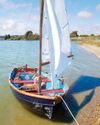
Seaworthy dinghies for less than £500
For low cost traditionally-styled GRP trailer-sailers, consider the Foreland and the Otter available at bargain basement prices
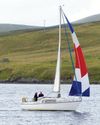
Playing with coloured sails
Maintaining an hourglass-shaped balloon and ratcheting up the log numbers